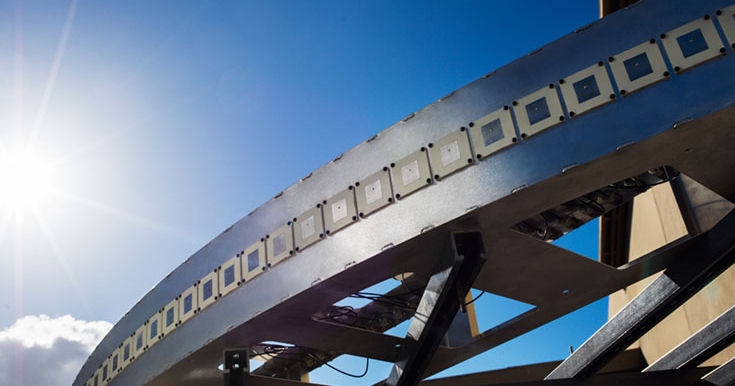Social media giant Facebook has doubled-down on bringing connectivity to under-served environments with the launch of two new terrestrial connectivity systems.
April 14, 2016

Social media giant Facebook has doubled-down on bringing connectivity to under-served environments with the launch of two new terrestrial connectivity systems.
On the opening day of its f8 developer conference Facebook talked up some of its more novel connectivity initiatives such as drones, but on day two things came back down to earth. Terragraph is an urban wireless initiative using the unlicensed 60GHz band, based on the WiGig standard, and with the stated aim of achieving 100% street-level coverage of gigabit wifi. This band typically has around 7GHz of bandwidth available – far more than in licensed bands, but one of the reasons for this is the poor propagation qualities of higher frequency spectrum.
Facebook’s solution to this is to use a network of street-level distribution nodes 200-250 metres apart that interact to overcome obstacles, coupled with client nodes for wifi, small cells and Ethernet access. On top of that Facebook is claiming some special sauce from its own datacentre architecture, which includes IPv6-only nodes, an SDN-like cloud compute controller, and a new modular routing protocol for fast route convergence and failure detection.
Project ARIES shifts the focus to spectral and energy efficiency. It is currently at the proof-of-concept phase and consists of a base station of 96 antennas (see top image) that can apparently support 24 streams simultaneously over the same spectrum. Facebook says this currently equates to 71bps/Hz of spectral efficiency, rising to over 100 when it’s finished.
At the root of Project ARIES comes the apparent desire to see how far you can take Massive MIMO technology, specifically using the concept of ‘spacial multiplexing’ to serve multiple clients on the same time-frequency resource.
“Massive MIMO systems with an excessively large number of antennas have recently gained attention, thanks to asymptotic results on random matrix theory that illustrate how the effects of uncorrelated noise and small-scale fading are virtually eliminated as the number of antennas in a MIMO cell grows large,” said the Facebook developer announcement.
While it’s fair to assume that commercial organisations are driven entirely by self-interest, Facebook’s drive to improve global connectivity does seem likely to help move things along for everyone. The company is a fair bit of resource to initiatives such as this, TIP and internet.org, and in this case it’s self-interest is of the more enlightened variety.
About the Author(s)
You May Also Like








.png?width=300&auto=webp&quality=80&disable=upscale)


_1.jpg?width=300&auto=webp&quality=80&disable=upscale)


.png?width=800&auto=webp&quality=80&disable=upscale)